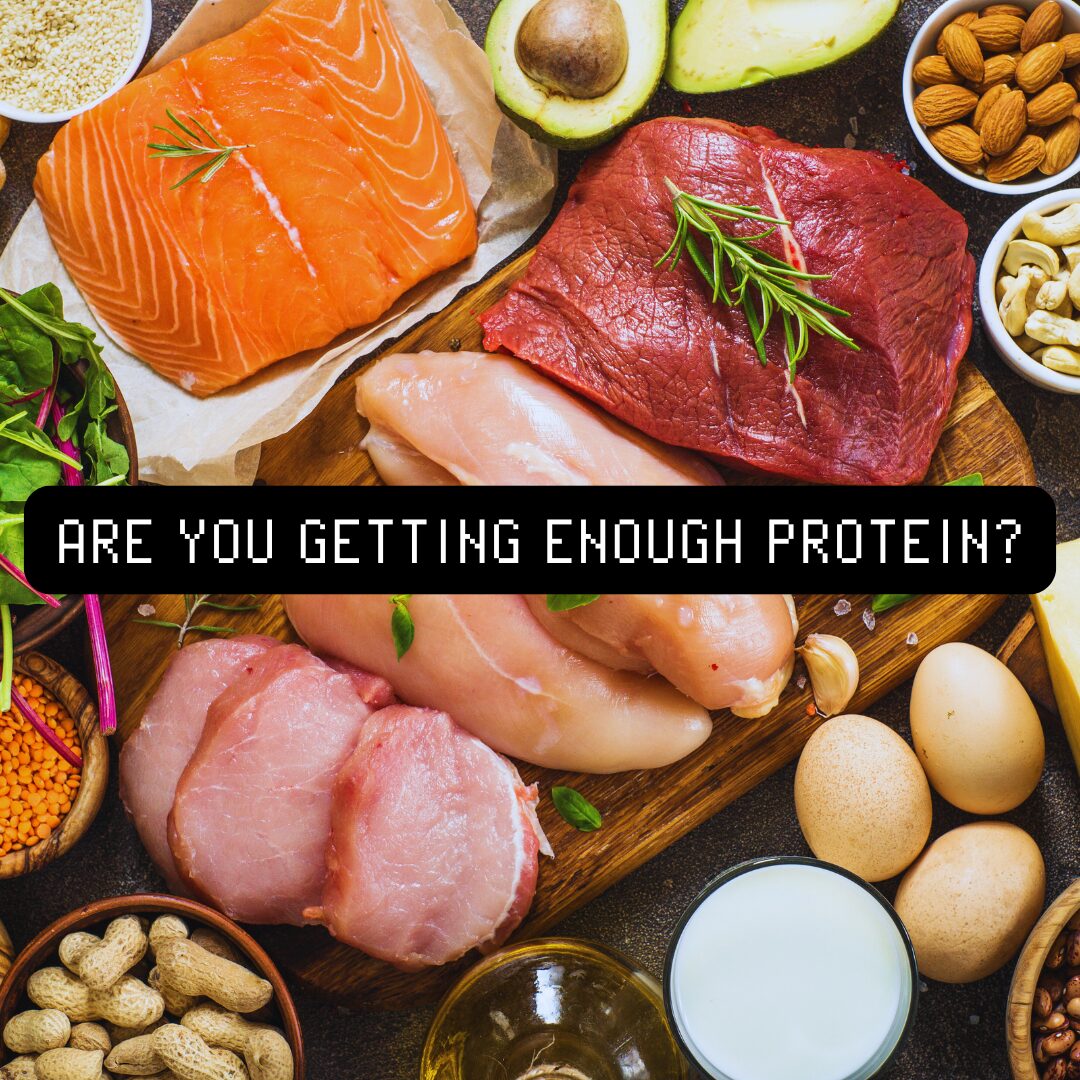Introduction
Protein plays a crucial role in health and function throughout the lifespan, supporting growth, maintenance, repair, immune function, and satiety. However, protein needs vary significantly by age, sex, and physiological state, such as pregnancy, ageing, or recovery from illness. This article explores evidence-based protein recommendations across different life stages, highlighting the importance of optimising intake for health and performance.
Infants and Young Children (0–3 years)
During infancy and early childhood, protein supports rapid growth and organ development. The current Nutrient Reference Values (NRVs) for Australia and New Zealand recommend 14 g/day for toddlers aged 1–3 years (1). Breastmilk and infant formulas typically provide adequate protein, and as complementary feeding begins, protein-rich foods such as meat, legumes, and dairy are introduced.
While severe protein deficiency is rare in high-income countries, ensuring adequate quality (i.e. complete amino acid profiles) during weaning is important. A study by Darling et al. (2017) emphasised the role of high-quality protein sources in supporting linear growth and muscle development in young children.
Children and Adolescents (4–18 years)
As children grow, protein needs increase to support musculoskeletal development, hormonal changes, and brain maturation. The NRVs recommend:
– 19 g/day for children aged 4–8,
– 34–52 g/day for children aged 9–13,
– 46–64 g/day for adolescents aged 14–18, depending on sex (1).
During adolescence, increased physical activity, sports participation, and periods of rapid growth may increase protein requirements beyond the RDI. A 2019 review by Moore et al. suggested that adolescent athletes may benefit from 1.2–1.6 g/kg/day to optimise recovery and lean mass accrual.
Adults (19–64 years)
For healthy adults, the current RDI in Australia is 0.84 g/kg/day for men and 0.75 g/kg/day for women (1). However, research suggests that higher intakes may offer additional benefits, particularly for active individuals, those trying to lose fat while preserving muscle, or people recovering from injury.
A meta-analysis by Morton et al. (2018) found that consuming 1.6–2.2 g/kg/day of protein optimised resistance training adaptations, including strength and muscle mass. Protein timing and distribution may also be relevant: ingesting 20–40 g of high-quality protein per meal, spaced across the day, appears to promote better muscle protein synthesis (MPS).
Older Adults (65+ years)
Ageing is associated with sarcopenia—the progressive loss of muscle mass and strength—which increases the risk of falls, frailty, and functional decline. While the RDI remains 0.75–0.84 g/kg/day, several experts advocate for higher intakes in older adults to counter anabolic resistance (1).
A 2020 consensus statement from the PROT-AGE Study Group recommended 1.0–1.2 g/kg/day for healthy older adults and up to 1.5 g/kg/day for those with chronic illnesses or acute disease. High-quality protein, particularly leucine-rich sources like whey, supports MPS and preserves lean mass when combined with resistance training.
Pregnancy and Lactation
Protein needs increase during pregnancy and breastfeeding to support fetal and infant development, maternal tissue expansion, and milk production. The NRVs recommend:
– 1.0 g/kg/day in the second trimester,
– 1.1 g/kg/day in the third trimester,
– 1.1 g/kg/day during lactation (1).
A 2015 study by Stephens et al. found that protein turnover increases significantly during pregnancy, indicating a need for higher dietary protein to support tissue synthesis. Inadequate intake may impair fetal growth and maternal health outcomes.
Special Populations
– Athletes: Endurance and strength athletes may require 1.2–2.0 g/kg/day depending on training load and goals.
– Vegetarians/Vegans: While plant-based diets can meet protein needs, they may require slightly higher total intake (~10%) due to lower digestibility and amino acid profile.
– Hospitalised or Chronically Ill: Protein requirements can increase to 1.2–2.0 g/kg/day during recovery from illness, injury, or surgery.
Protein Quality and Distribution
While total daily intake is important, the quality and distribution of protein also matter. High-quality proteins (e.g. dairy, eggs, lean meats, soy) contain all essential amino acids and are more effective at stimulating MPS.
Emerging research suggests that even distribution of protein across three meals per day (rather than skewing most intake to dinner) may better support muscle health, especially in older adults (PMID: 24534096). Ingesting 25–30 g of high-quality protein per meal appears to maximise the anabolic response.
Practical Recommendations
– Encourage whole food sources of protein, such as lean meats, dairy, legumes, tofu, nuts, and fish.
– Aim for 25–30 g of protein per main meal, especially in older adults.
– Distribute protein intake evenly throughout the day rather than loading it in one meal.
– Include resistance training to support muscle retention, particularly in older adults or those losing weight.
– Assess protein needs individually, considering body weight, health status, and activity level.
Conclusion
Protein requirements vary across the lifespan, with higher needs in infancy, adolescence, pregnancy, older age, and times of physiological stress or increased physical activity. While the RDIs provide a baseline, individualised intake that considers age, goals, and health status may offer greater benefits. Ensuring adequate quantity, quality, and distribution of protein is essential for maintaining health, function, and quality of life at every stage.
References
- National Health and Medical Research Council (NHMRC). Nutrient Reference Values for Australia and New Zealand. https://www.nrv.gov.au/
2. Darling AL, et al. Protein and growth in early childhood. Nutrients. 2017. PMID: 28411280
3. Moore DR, et al. Protein Requirements of Young Athletes. Nutrients. 2019. PMID: 30744665
4. Morton RW, et al. Protein Supplementation and Resistance Exercise. Br J Sports Med. 2018. PMID: 28698222
5. Areta JL, et al. Timing and distribution of protein. J Physiol. 2013. PMID: 24958504
6. Bauer J, et al. PROT-AGE Study Group. Clin Nutr. 2013. PMID: 29786647
7. Churchward-Venne TA, et al. J Gerontol A Biol Sci Med Sci. 2018. PMID: 30240026
8. Stephens TV, et al. Am J Clin Nutr. 2015. PMID: 25696055
9. Gorissen SH, Witard OC. Nutrients. 2020. PMID: 32597685
10. Deutz NEP, et al. Clin Nutr. 2019. PMID: 31338747
11. Mamerow MM, et al. J Nutr. 2014. PMID: 24534096

